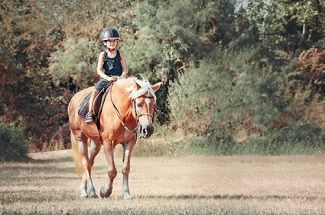Safe Travels: Minimizing Transport-Related Behavioral Problems in Horses
Transport-related problem behaviors can compromise the safety and welfare of both horses and their handlers, underscoring the need to reduce the frequency of these behaviors.

A transport-related problem behavior (TRPB) has been defined as “any transport-related behavior that impedes welfare or safety of the horse or handler during the transportation process.” TRPBs, such as refusal to load, have been studied for nearly 4 decades. Their incidence, however, has not decreased, potentially due to the inadequate education of horse handlers on transportation management.
The authors of a recent Journal of Equine Science publication presented current equine TRPB knowledge and proposed solutions for minimizing TRPB incidence.
Types of TRPBs
TRPBs can be categorized according to the phase of transportation:
- Pre-loading problem behaviors (PPBs): A horse can become anxious during pre-loading preparation because of pending separation from its familiar environment and negative associations with prior travel. Such anxiety is exhibited by vocalizing and pawing. The horse-handler relationship plays a crucial role in PPBs.
- Loading problem behaviors (LPBs): Loading is quite stressful for horses, given their neophobia and an innate aversion to confinement. Horses may rear, kick out, or bolt during loading, posing significant injury risks to both horse and handler. LPBs can also cause time delays and unintentional reinforcement of negative behaviors.
- Traveling problem behaviors (TPBs): TPBs stem from such travel stresses as confinement, vibrations, and speed fluctuations. Examples of TPBs include pawing and kicking the trailer wall. Such behaviors can lead to injury and, possibly, transport-related diseases such as heat stroke.
- Unloading problem behaviors (UPBs): Horses may be reluctant to unload due to a steep or slippery ramp, or they may decide to bolt from the trailer.
Minimizing TRPBs
“TRPBs are recognized as both a horse-related risk to humans and a human-related risk to horses,” the authors wrote. Thus, minimizing TRPB incidence is important for the safety and welfare of horses and humans. Various learning approaches can be employed to reduce this incidence.
Associative Learning
- Operant conditioning uses either a reinforcer to encourage good behavior or a punishment to discourage bad behavior. Negative reinforcement (NR), which involves immediately removing an aversive stimulus (eg, physical pressure) when good behavior is performed, is commonly used to resolve loading problems. However, if a horse is unruly during loading, NR can be applied incorrectly, leading to unintentional reinforcement of bad behavior. Thus, positive reinforcement (PR)—rewarding good behavior with food—is the preferred training method for horse transport.
- Classical conditioning modifies behavior by pairing a stimulus (eg, clicker) with a desired behavior, then using PR. Clicker training could work well for transport-related training but, if used incorrectly, could reinforce negative behavior.
- Target training and self-loading training encompass classical and operant conditioning methods and can both be used to reduce TRPB incidence.
Non-associative Learning
- Habituation and desensitization to each phase of transportation can lessen TRPB incidence and improve horse welfare, particularly if performed when horses are young. For example, horses can be habituated to loading procedures, like leading and backing up.
Looking Forward
After reviewing the current TRPB knowledge, the authors determined that several factors are crucial to reducing TRPB incidence: positive human-horse relationship, adequate training for each transportation phase, appropriate horse handling, and safe driving skills. Given these findings, they concluded that “further research and education with respect to transport management are essential to substantially decrease the incidence of TRPBs in horses.”
Dr. Pendergrass received her Doctor of Veterinary Medicine degree from the Virginia-Maryland College of Veterinary Medicine. Following veterinary school, she completed a postdoctoral fellowship at Emory University’s Yerkes National Primate Research Center. Dr. Pendergrass is the founder and owner of JPen Communications, a medical communications company.
2 Commerce Drive
Cranbury, NJ 08512
All rights reserved.